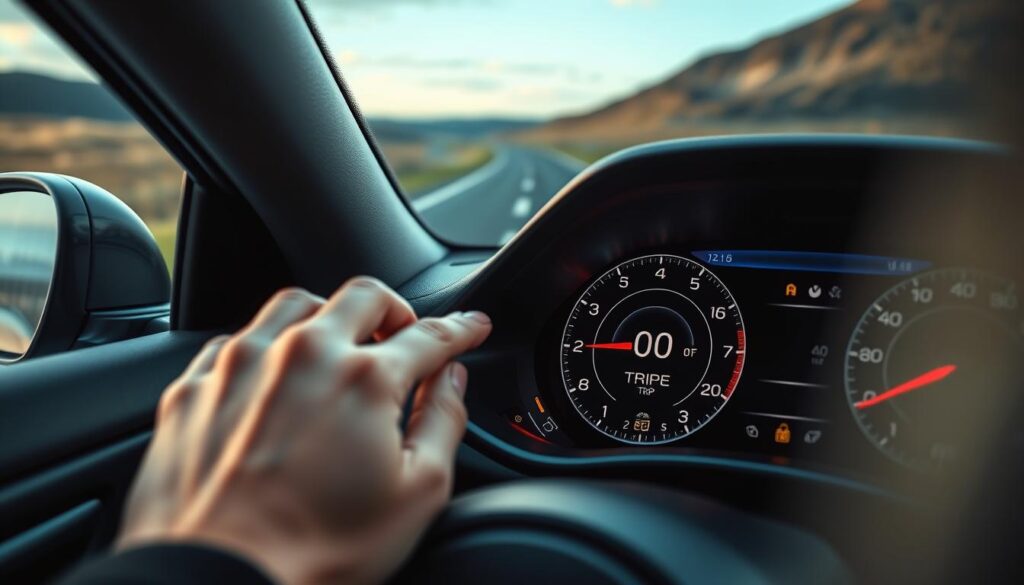As a proud car owner, I know the pain of watching your car’s value drop. It’s a natural part of car ownership, but you can slow it down. In this guide, I’ll share tips to keep your car’s value high, helping you get the best return on your investment.
In This Guide
Understanding Vehicle Depreciation Basics
Depreciation is key when you own a car. It’s when a car’s value goes down over time. Knowing about depreciation helps you keep your car’s value up.
Factors Affecting Depreciation Rates
Several things affect how fast a car loses value. These include the car’s make, model, and age. Also, how much it’s been driven, its condition, and market trends matter. Luxury cars lose value faster, but reliable ones might keep theirs better.
Keeping your car in good shape can slow down depreciation. Regular maintenance helps a lot.
The First-Year Depreciation Impact
The first year is crucial for depreciation. A new car can lose up to 30% of its value right away. This big drop in value is something to think about when buying a new car.
Market Trends and Value Loss
The car market also affects depreciation. Things like the economy, what people want, and trends in the industry matter. Knowing about these trends can help you predict value losses and make better choices about your car.
Understanding depreciation basics helps you manage the costs of car ownership. Knowing what affects depreciation and market trends lets you make smart choices to keep your car’s value up.
Car Depreciation Tips for Long-Term Value Retention
To keep your car’s value high, you need a smart plan. Regular care and careful driving are key. Here are some car depreciation tips to help your car stay valuable. Let’s look at how to keep your investment strong.
- Stick to the Manufacturer’s Schedule: Keeping up with the car’s maintenance schedule is vital. Regular oil changes and tire rotations help your car run well. This reduces depreciation.
- Keep Detailed Records: Document all maintenance and repairs on your car. This shows you care about long-term maintenance when you sell.
- Limit High Mileage: High mileage hurts your car’s value. Try to drive less and use other ways to travel for long trips.
- Protect the Exterior: Washing, waxing, and touching up paint keeps your car looking good. A nice-looking car is more valuable.
- Store It Right: Storing your car in a garage or under a cover protects it from the weather. This helps keep its value retention.
Using these car depreciation tips can help your car keep its value. A well-kept, attractive car is worth more when you sell or trade it.
“Caring for your car today can ensure it retains its value for years to come.”
Regular Maintenance Schedule: Your First Defense
Keeping your car’s value up starts with a regular maintenance plan. Following the maker’s service schedule helps protect your investment. It also keeps your car running well for many years.
Essential Service Intervals
Oil changes, tire rotations, brake checks, and fluid checks are key. They should be done when the manufacturer says. Doing these tasks keeps your car’s parts lasting longer and in better shape.
Documentation and Record Keeping
Keeping good records of your car’s maintenance is crucial. Write down all service visits, including dates, mileage, and what was done. This record can help when selling your car, showing it’s been well cared for.
Professional vs. DIY Maintenance
Some simple tasks you can do yourself, but for complex ones, go to a pro. Dealerships and certified mechanics have the right tools and knowledge. They ensure your car gets the care it needs to keep its value.
With a regular maintenance plan, detailed records, and professional help when needed, you protect your car’s value. You’ll also have a smooth, worry-free drive.
Protecting Your Vehicle’s Exterior Condition
Keeping your vehicle exterior in good shape is key to its value. There are many ways to do this, from washing right to using paint protection. These steps help prevent rust and keep your car looking great.
Washing your car regularly is the first step. Use a good car wash and a soft cloth to clean it. Don’t use harsh cleaners or rough sponges, as they can harm the paint.
- Wash the vehicle in the shade to prevent water spots from forming.
- Rinse thoroughly to remove all soap residue, as it can lead to discoloration over time.
- Dry the car with a high-quality microfiber drying towel to prevent water spots.
After washing, apply a car wax or sealant. These products protect against fading, oxidation, and scratches. Put on new wax or sealant every few months to keep your car looking good.
For even more protection, think about paint protection film or ceramic coating. These treatments shield your car from damage and wear.
Don’t forget about rust prevention. Check the undercarriage and wheel wells for rust. Fix any rust spots quickly to avoid bigger problems.
“Maintaining your car’s exterior is not just about making it look good; it’s a crucial investment in preserving its long-term value.”
By following these tips, you can keep your car in great shape. This will help its value stay high for years to come.
Interior Care and Preservation Strategies
Keeping your car’s interior in top shape is key to its value. It’s about more than just looks. It’s about protecting your upholstery and keeping the climate just right. A few simple steps can keep your car’s inside looking new.
Upholstery Protection Methods
Protecting your car’s seats is a must. Clean them often, use special conditioners, and apply protective layers. This stops fading, cracking, and wear. Also, consider using quality seat covers and floor mats to protect against daily wear.
Dashboard and Console Maintenance
The dashboard and center console are your car’s control centers. Clean them regularly with the right cleaners and polish them. This keeps them looking like new. Also, avoid direct sunlight to prevent damage.
Climate Control Considerations
Good climate control is vital for your car’s interior. Keeping the temperature and humidity steady helps prevent damage. Regular air filter changes and climate system checks keep your car comfy and protected.
| Interior Care Aspect | Recommended Practices |
|---|---|
| Upholstery Protection |
|
| Dashboard and Console Maintenance |
|
| Climate Control Considerations |
|
By following these interior care tips, your car will stay valuable and look great. It will have upholstery protection and climate control for years.
Mileage Management and Usage Patterns
It’s important to keep an eye on your car’s mileage and how you use it. Tracking mileage helps you understand your driving habits. This knowledge can help you make choices that keep your car’s value high.
The number of miles on your car affects its value. Cars with fewer miles are worth more. By tracking your miles and driving less, you can keep your car’s value up.
Strategies for Effective Mileage Management
- Plan your routes and combine errands to minimize unnecessary driving.
- Avoid excessive idling, which can contribute to higher mileage without actually moving the vehicle.
- Consider carpooling or using public transportation for commuting when possible, reducing the overall mileage on your personal vehicle.
- Regularly check your car’s odometer to track mileage and keep detailed records of your driving patterns.
How you use your car also affects its value. Your driving style, the terrain you drive on, and the weather can all impact your car’s condition. This, in turn, affects its value.
Mindful Driving Habits for Value Preservation
- Avoid aggressive acceleration, braking, and cornering, as these can lead to increased wear and tear on the vehicle.
- Be cautious when driving in harsh weather conditions or on rough terrain, as these can accelerate the aging process of your car’s components.
- Regularly clean and maintain your vehicle’s interior to preserve its appearance and condition.
By following these tips, you can keep your car’s value high. This will help you get a better price when you decide to sell it.

“Careful consideration of your driving habits and mileage can go a long way in preserving your car’s value over time.”
Choosing the Right Insurance Coverage
Keeping your car’s value safe is key. The right insurance can protect it from losing value. Knowing about gap insurance and the differences between comprehensive and basic coverage helps you choose wisely.
Gap Insurance Benefits
Gap insurance is a must for new car owners. It covers the difference between what you owe on the car and its current value if it’s stolen or wrecked. This way, gap insurance saves you from big costs if your car is lost or damaged.
Comprehensive vs. Basic Coverage
The coverage you pick affects your car’s long-term value. Comprehensive coverage protects against many risks, like accidents and theft. Basic liability coverage only helps with claims against you, leaving your car open to value loss.
| Coverage Type | Protects Against | Impact on Value Retention |
|---|---|---|
| Comprehensive | Accidents, natural disasters, vandalism | Helps maintain vehicle’s condition and value |
| Basic Liability | Third-party claims only | Leaves your vehicle exposed to value-reducing events |
Understanding insurance coverage, gap insurance, and comprehensive coverage helps you protect your car’s value. This choice gives you peace of mind while you own your vehicle.
Strategic Timing for Vehicle Sales
When it’s time to sell your vehicle, getting the best value is key. The vehicle market changes often. Knowing the right time to sell can greatly impact your trade-in value. We’ll look at what makes the best time to sell your vehicle.
Seasonal Fluctuations
The demand for cars changes with the seasons. Spring and summer are usually busier, with more buyers. Fall and winter are slower, as people are more careful. Selling during the busy seasons can help you get a better price.
Vehicle Age and Mileage
The age and mileage of your car affect its trade-in value. New cars with low mileage keep their value longer. Older cars with high mileage lose value faster. Keeping an eye on your car’s age and mileage helps you know when to sell for the best price.
Market Trends and Demand
The state of the vehicle market also plays a part. Economic conditions, consumer confidence, and trends can change demand. Staying up-to-date with these trends helps you sell at the best time and get a higher trade-in value.
“The key to maximizing your vehicle’s value is timing your sale strategically to align with market conditions and seasonal trends.”
Understanding how depreciation and market trends work helps you decide when to sell. Keep an eye on the market and be ready to sell when it’s best.

Modifications and Their Impact on Value
Understanding how modifications affect your vehicle’s value is key. Some upgrades can boost your car’s resale price. But others might lower it. It’s important to think about how changes will affect your car’s worth in the long run.
Aftermarket Upgrades Worth Considering
Upgrades like top-notch audio systems, performance parts, or fancy exterior accessories can increase your car’s appeal. They show you care about your vehicle, which can lead to a better resale price. But, make sure these upgrades are tasteful and fit your car’s design and purpose.
Modifications to Avoid
On the other hand, big changes or customizations can hurt your car’s resale value. Things like custom paint jobs, big body kits, or extreme engine mods might scare off buyers. The goal is to find a balance between showing your style and keeping your car’s value.

